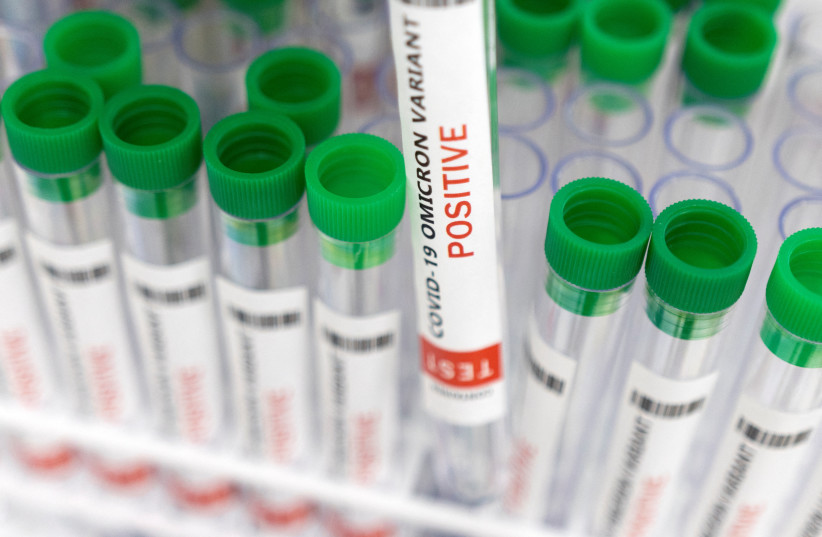Scientists are keeping their eyes on a new SARS-CoV-2 (novel coronavirus) variant descended from the Omicron variant that has an unusual nine mutations on its spike protein and has spread to countries across the globe somewhat faster than other such variants.
The new variant, identified as BA.2.75, was first found in a sequence taken in India in early June. Since then, the variant has been spotted in Australia, Canada, Japan, Germany, New Zealand, the United Kingdom and the US. In just a matter of weeks, the variant has been detected in over 80 sequences around the world.
While it is still unclear if BA.2.75 will be able to compete with BA.5, the dominant variant in many countries at the moment, the number of mutations and its seemingly fast spread across a wide geographic area have scientists keeping an eye on it.
Dr. Shay Fleishon, with the Central Virology Laboratory at Sheba Medical Center in Tel Hashomer, called the new subvariant "alarming," stressing that while it is too soon to tell if this will be the "next dominant variant," it could imply a trend to come.

Fleishon explained in a Twitter thread that recent months have seen a trend of variants based on Omicron lineages with mutations in the S1 section of the spike protein and specifically in the part of the spike protein which the virus uses to connect to and gain entry into cells, on a level not seen in second-generation variants from other variants of concern.
Up until now, however, these second-generation variants have only been found in a few cases within one region. This is the first time a second-generation variant from Omicron has spread to multiple regions.
Notable mutations on BA.2.75
The Bloom Lab at the Fred Hutch research institute tweeted that the variant is "worth tracking" due to "appreciable antigenic change" compared to its parent, BA.2. The lab pointed to two mutations as key: G446S and R493Q.
G446S is a mutation that could help the virus escape from antibodies elicited by current vaccines that still are effective against BA.2. On the bright side, it seems that those who have already been infected by BA.1 will not be as at risk of reinfection by BA.2.75. The R493Q mutation, meanwhile, seems to increase the virus's ability to attach to ACE2, the protein which the coronavirus uses to enter cells.
N460K, another mutation on the BA.2.75 variant, also increases the virus's ability to attach to ACE2, according to the Bloom Lab.
More information is needed
All the scientists who commented on the new variant agreed that more information is needed before we know just how significant BA.2.75 will be, with expectations that the coming weeks will show if it can compete against BA.5 or not.
According to the United Kingdom's i news, the UK Health Security Agency is aware of the new variant, but a source told the newspaper that it was just one of a number of new strains being monitored and that it was not yet a cause for concern.
